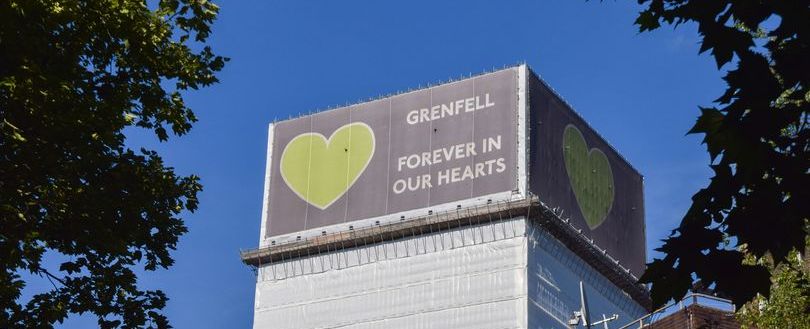
If experts are not listened to, a consultation on stair safety following Grenfell is a "sham"
Like it? Share it!
13 June 2023
An ex-president of the Royal Institute of British Architects (RIBA) said the Grenfell Tower fire, which occurred six years ago on Wednesday, was "the most shocking event imaginable" and a reminder of "what happens when things are not done properly" in remarks made ahead of the anniversary.
The government is now taking into account feedback from a consultation that proposed new regulations to require second staircases in new residential buildings over 30 metres (roughly 10 stories).
But a coalition of architects, fire safety and disability rights organisations have said the legal height limit must be lowered, arguing that second staircases should be compulsory for new tower blocks which are 18 metres high (approximately six storeys).
Grenfell Tower, a 24-storey building, had a single stairwell.
Achieving a balance between fire safety, practicality, and affordability is "not easy," according to RIBA's past president and current board chair Jack Pringle, but experts have come to the conclusion that 18 metres is the best option.
He told the PA news agency: “We’ve decided where we think the balance lies and we’re lobbying very strongly for that. And we hope that our view holds sway on the day, but it’s a process that we have to go through.”
Asked for his reaction if the government does not change to 18 metres, Mr Pringle said: “If something goes to consultation, then they’ve got to listen to the replies to the consultation. Otherwise, it’s a sham.
“And with the lobby that is lined up for 18 metres, I think the Government needs to listen to the experts in the field which we’ve pulled together for the 18 metres. So I would be very disappointed if they don’t respond and 18 metres is not brought in as the limit.”
He said he was “particularly swayed” by calls from the National Fire Chiefs Council (NFCC) for the lowering of the height limit, “because these are the people who in the end are responsible for getting people out of fires, so their view weighed pretty heavily with me”.
Mr Pringle added: “I don’t know why the Government is at 30, we don’t think it’s reasonable. If it’s cost, I think that’s misplaced. As I say, we want to go for 18 and just about everybody else is lined up with us on that.”
The coalition, which is made up of the RIBA, the Royal Institution of Chartered Surveyors (RICS), the NFCC, and Disability Rights UK, has stated that the 18-metre threshold would be in line with definitions in the Building Safety Act, thresholds for specific provisions in the Fire Safety (England) Regulations, and would help to synchronise standards throughout the UK by being in line with Scottish regulations.
Research conducted since the Grenfell Tower fire suggests that more people are choosing to leave their building during a fire than are advised to "stay put," highlighting the significance of having access to safe evacuation routes for residents.
Mr Pringle, who has been involved in teaching the next generation of architects, said young people must be “sensitised” to the responsibility they hold in the design industry.
He said: “I think Grenfell must be used as a sort of terrible icon, a terrible signifier of how important our work is and that literally people’s lives are in our hands and that as a young architect when you’re training you must be sensitised to your responsibilities going forward.
“We want to design beautiful buildings that people enjoy living in but there is also the serious matter of safety and I think for young people to be sensitised to that during their training is really important.”
The government acknowledged the need for clarity and promised to give it to the industry as soon as possible, adding that it is currently analysing the responses to the consultation.
Visit the SOURCE here.
Our eNews provides regular insight into industry trends, news headlines, and product and service information. For news articles parallel to those mentioned above, sign up for our eNews. Click here to sign up: Subscribe to our enews (fia.uk.com)
Related training
Related news
-
New FIA Guidance on BS 5839-1 Fire Alarm Categories
23 December 2025
-
Serviced Apartments: An Emerging Fire Safety Risk
17 December 2025
